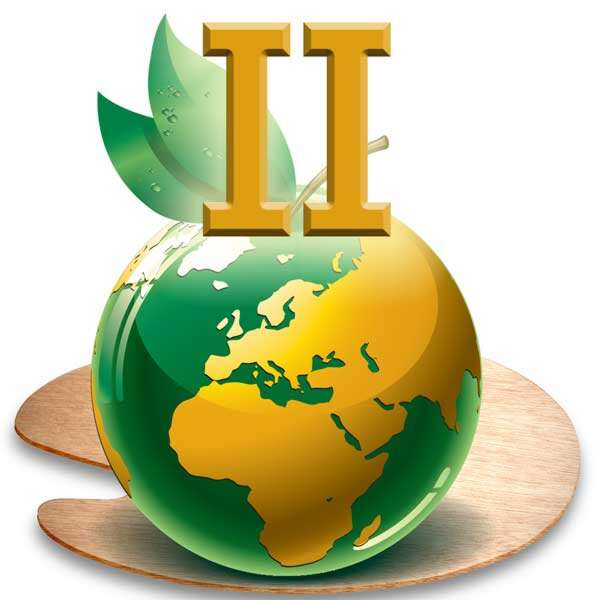Earth Tones Set II
Earth Tones™ Palettes give you a rational approach to color in oil painting by providing you with a set of colors harmonious in value and saturation. These colors can be blended and used interchangeably with other oil color brands. Wooden palette is not included
Buy this palette and save 10%.
Earth Tones™ palettes give you a rational approach to color in oil painting by providing you with a set of colors that harmonious in their value and saturation relationship. Add Bone Black (warm) to complete the warm and cool sequence. Extend the range of color effects by playing one tone against another and by making tints with Lead White. The Earth Tones™ Palette II includes one 50 ml tube each of:
| Rublev Colours Earth Tones™ Palettes II | |||
Color Swatch | Color Name | Tube | Price |
Italian Yellow Earth is a transparent yellow with fair tinting strength, medium-grained that makes bright yellow half tints and glazes. Our Yellow Earth is from quarries in northern Italy. | 50 ml | $14.90 | |
Verona Green Earth is a transparent deep green with warm undertones, medium grained and low tinting strength. Our Verona green earth pigment is from basaltic tufa deposits in Brentonico near Santa Cristina (Verona). | 50 ml | $14.90 | |
Venetian Red is a transparent deep red earth with pink undertones, medium-grained with medium tinting strength, and brushes "long." | 50 ml | $14.90 | |
Italian Sienna is a semi-transparent golden brown with good tinting strength, medium grained and, like most Rublev Oil Colours, brushes "long" in the direction of the brush stroke. Our Italian sienna is from quarries in the Siena region of Italy. | 50 ml | $14.90 | |
Italian Green Umber is a semi-transparent, deep greenish umber with good tinting strength, fine-grained and brushes "long" in the direction of the brush stroke. | 50 ml | $14.90 | |
| $74.50 | ||
Note: Colors swatches are shown in mass tone, straight from the tube, on the left, and mixed with an equal amount of titanium white on the right. All pictures of color swatches in this web site are only approximations of the actual color of the oil paint. We taken every care to match the color in these pictures on calibrated color monitors to the actual color. However, because of the wide variance in color monitors the results you get may vary.
Tone, Color and the Limited Palette
Tone is the use of contrast between light and shade in painting, which is sometimes referred to by the Italian term chiaroscuro. It can be an aid to composition, such as in the works of Vermeer; the creation of space; and to communicating a sense of form, as in paintings by Leonardo. The use of tone was especially prevalent in the works of Caravaggio, Rembrandt and Velázquez, and the schools to which they belonged.
Tone is also important in the use of colors. Harold Speed, British painter and author, writes that it is "so intimately associated with color that many think they are admiring color when they are admiring tone." Muddy color is usually the 'result of bad tone relationships.'
A limited palette of earth pigments, Earth Tones™ palettes, was especially conceived to help build tone relationships and color harmony in oil painting. Earth Tones™ palettes enable you to paint with color without losing an emphasis on tone.
The limited palette has many advantages. One advantage is that with fewer colors on the palette it is easier to create color unity in a painting. Improving your color mixing skills is another advantage. The simplicity of a limited palette encourages experimentation and quickly builds an appreciation for the subtle nuances of every color. Philip Hammertone wrote in The Graphics Arts: "Limited palettes are the best instructors in colouring, because they teach us, far better and more effectually than a great number of pigments ever can do, the wonderful effects of mixture."
Speed advised learning to paint using only two colors—a warm and a cold color. "A great deal that is of vast importance with regard to colour, can be more directly learned by this means than by stumbling straight into a full palette."
Warm colors are those hues ranging between yellow to red-violet on the chromatic circle. Cool colors are colors ranging between blue-violet and yellow-green on the color circle.
This degree of warmth or coolness exhibited by a color is also called 'color temperature.' For example, madder lake is a cooler (leaning toward blue) red than red ocher, which is warmer (inclining toward yellow).
The interaction between colors may cause a hue such as yellow-green to appear colder if it is placed next to a warm color, such as red, or warmer if it is placed next to a cool color, such as blue.
Contrasts of warm and cool colors, as Speed insists, is 'the most important consideration in coloring' upon which 'the vitality of coloring largely depends.'
Warm-cool contrasts resulting from the juxtaposition of warm and cool colors makes warm hues appear warmer, and vice versa. This type of contrast, which helps balance color schemes, are in Earth Tones™ palettes.
Earth Tones™ palettes are built on the idea of warm and cool colors in a subdued range of green, red and brown hues. The palettes help to make clear the contrasts of temperature within each of the colors.
Note: We may substitute colors that are out of stock or unavailable at the time of your order with similar hues of equal or greater value.
| SKU | 810-1202 |
|---|---|
| Brand | Rublev Colours |
| Vendor | Natural Pigments |
| Processing Time | Usually ships the next business day. |




